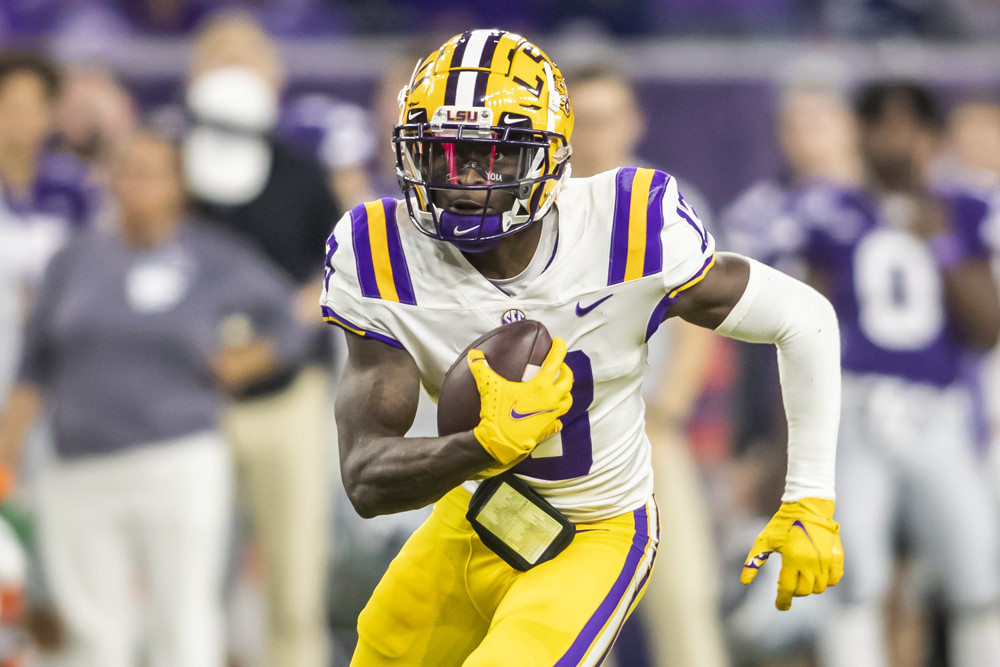The XFL is back! Starting on Feb. 18, teams will take the field with some familiar names both playing and coaching — Martavis Bryant, Hines Ward, Wade Phillips, A.J. McCarron, Brian Hill, Josh Gordon, and more.
Get in on the action with our XFL packages. We offer both weekly and full-season options. Subscribe here.
Passing Game Outlook
Head coached by longtime NFL Defensive Coordinator Wade Phillips, the XFL offense I most look forward to seeing will be overseen by 33-year-old A.J. Smith. Though Smith is a virtual unknown, a deep dive into his coaching career — which began at age 19 — indicates offensive innovation should be expected. Likely hired, at least in part, because of his ties to Phillips, Smith is a disciple of Hal Mumme’s Air Raid system. Not only has Smith coached alongside the likes of June Jones, Mumme, and USFL Breakers HC Noel Mazzone, but he also pioneered the virtual reality system used to leverage new technology to help train QBs. Now the football wunderkind will get a shot at the professional ranks alongside one of the profession’s most decorated defensive coaches. While historic play-calling data is hard (impossible) to come by, it stands to reason that Smith’s offense will be among the league’s most pass-centric, utilizing a high-percentage, low-aDOT game plan to get the ball into the hands of his most dynamic playmakers. Under center, the Roughnecks were assigned spring league vets, Brandon Silvers and Kaleb Eleby, later adding Cole McDonald to round out the QB room. While QB playing time is still unclear, I expect Silvers to nominally serve as the team’s QB1, though it’s possible Eleby or McDonald also take snaps under center.
Somewhat surprisingly, an Air Raid offense used its first two offensive skill-position selections on RB Adrian Killins and TE Garrett Owens. I’ll get to Killins in the running game outlook section of this preview, as it’s Owens who profiles as the more intriguing fantasy asset. Officially listed as a running back on Duquesne’s official website, Owens is a 6-foot-3, 230-pound swiss army knife who finished his collegiate career with 723/3,756/41 on the ground and 105/1,050/8 through the air. Capable of handling a comfortable workload as a rusher while also lining up in-line, in the slot, and on the perimeter, Owens’ Week 1 fantasy outlook is rivaled by few. After nabbing Killins and Owens, Houston used their next three selections on the WR position, drafting Cedric Byrd, Deontay Burnett, and Justin Smith. Byrd is a 5-foot-9, 175-pound slot receiver from Hawaii who crossed paths with McDonald, as the duo shared the field in their final two collegiate seasons. Not only does Byrd’s measurable profile fit the prototypical slot receiver mold, but he also ran 99.2% of his routes from that position during his senior season. Having run 83.8% of his routes from the slot in his final season at USC, Burnett also fits the mold of an XFL slot receiver, though the 6-foot, 190-pound build is more suited to compete on the perimeter. Selected in Round 7, LSU product Jontre Kirklin is a 6-foot, 184-pound WR capable of playing outside, as evidenced by his collegiate stint at LSU where he ran 71.9% of his routes out wide during his final season. Beyond the pass catchers selected during Phase 1 of the offensive skill-position draft, Houston boasts what is likely the most undersized group of receivers the league has to offer.
Running Game Outlook
Not only was Killins the team’s first overall selection, but he was also one of just three total RBs selected during the first 11 rounds of the league’s inaugural offensive skill-position draft. The 5-foot-8, 164-pound UCF product figures to own a significant role in the team’s pass-first offense. If Smith’s offensive approach is anything like Mumme’s was during the 2020 iteration of this league, the 30.4% RB target rate could result in PPR-friendly box scores for Killins. The aforementioned Owens should not be counted out as a contributor on the ground and can be projected to handle some rushing workload based on his collegiate usage. Former Washington State RB Max Borghi was selected in the sixth round. Borghi racked up a career-high 86 receptions in his sophomore season, showcasing plenty of pass-catching ability out of the backfield. Undersized at 5-foot-6, 165 pounds, Brycen Alleyne rounds out the RB room from Phase 1 of the Roughnecks’ draft. Alleyne posted 140/646/5 on the ground and 10/83/0 through the air in his final collegiate season at Delaware State in 2018. I expect the Roughnecks’ RB corps to devolve into a full-blown committee, resulting in some opportunities for most of the names on the team’s current depth chart.


